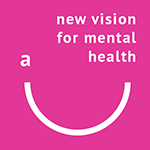This article was originally published on Mad in America. It begins:
“The ERNI (Emotions aRe Not Illnesses) declaration is based on the idea that distress does not equate to disease, dysfunction, dysregulation, or chemical imbalance. Signatories believe that there needs to be a shift from illness and diagnosis ideas to personal narratives and understandings.
The declaration was created with the appreciation that there are many like-minded people out there who share opinion, research, ideas, and experiences with others within many contexts but are frustrated by subsequent lack of action or change within mental health and other related systems.
The Disease Model
The disease model for understanding emotional distress has been the primary paradigm in Western cultures for a hundred years, with roots that stretch back even further.
So, how well have we done with it all? We certainly have the privilege of many years to look back upon. A hundred years on, have the developments of such ideas and technologies been roaring successes, resulting in a happier, more reasoned and free society?
The evidence is to the contrary. Whilst the language of science and medicine has prevailed, we have seen poorer and poorer outcomes of the associated regime. Growing evidence suggests that the drugs don’t work and that the cultures most heavily influenced by psychiatric medicine have the poorest long-term outcomes and disability rates in populations of distressed people.
But, as clinicians and users of services, we don’t need studies to convince us of this. We have first-hand knowledge of the harm the medicalisation of distress can do. We are aware that, unlike other branches of medicine, this is the only one where outcomes have got worse as “treatments” have developed and where cultures that do not embrace specialist medicine do so much better.
Without belabouring the point: it hasn’t worked.
We would argue that not only do the drugs not work (and cause harm) but that the system itself brings with it endless opportunities to rob people of the resources they have for getting on with life. Some of the processes through which this may happen are listed below …”
You can read more from here.




